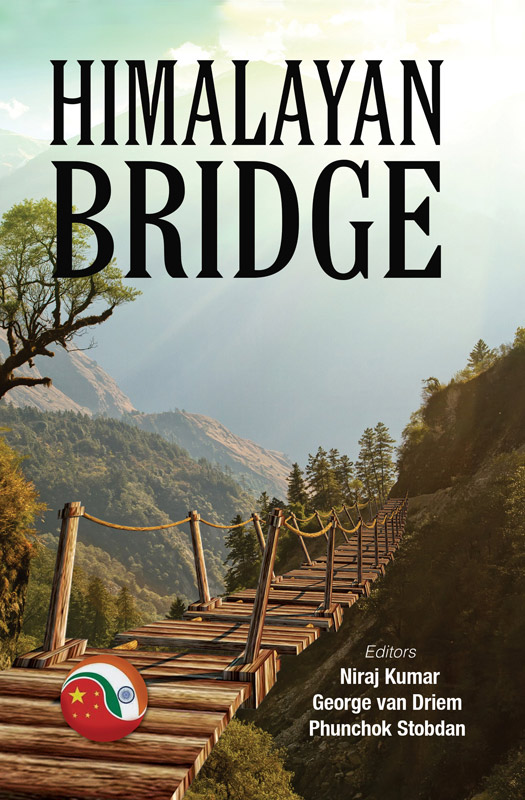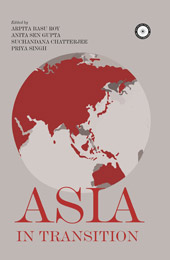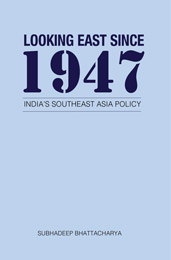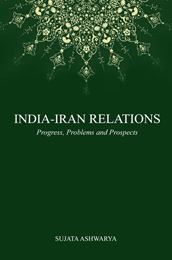Subjects
Recent View(s)
Himalayan Bridge
Niraj Kumar, George van Driem and Phunchok Stobdan
The centrality of the Himalayas as a connecting point or perhaps a sacred core for the Asian continent and its civilisations has captivated every explorer and scholar. The Himalaya is the meeting point of two geotectonic plates, three biogeographical realms, two ancient civilisations, two different language streams and six religions.
This book is about the determinant factors which are at work in the Himalayas in the context of what it constitutes in terms of its spatiality, legends and myths, religious beliefs, rituals and traditions. The book would suggest that there is no single way for understanding the Himalayas. There are layers of structures, imposition and superimposition of human history, religious traits and beliefs that continue to shape the Asian dynamics. An understanding of the ultimate union of the Himalayas, its confluences and its bridging role is essential for Asian balance. This book is a collaborative effort of an internationally acclaimed linguist, a diplomat-cum-geopolitician and a young Asianist. The book provides countless themes that will be intellectually stimulating to scholars and students with varied interests.
Editors
Niraj Kumar is the author of a magnum opus on Asian Integration—Arise Asia: Respond to White Peril (2002). His recent works include Sriyantra and Geophilosophy of India (2014), Asia in Post-Western Age (2014) and Rainbow of Indian Civilization (2015). He received initiation from Swami RanganathanandajiMaharaj of the Ramakrishna Mission in 1992 and is associated with the Society for Asian Integration (SAI).
George van Driem is the Director of the Linguistics Institute at the University of Bern in Switzerland, where he holds the Chair of Historical Linguistics. He has conducted field research in Bhutan, Nepal, northeastern India and the western Indian Himalayas since 1983. In 2001, he produced the first major ethnolinguistic synthesis of the Greater Himalayan region—extending from Central and South Asia to Southeast and East Asia—Languages of the Himalayas: An Ethnolinguistic Handbook of the Greater Himalayan Region Containing an Introduction to the Symbiotic Theory of Language (2 vols). Nowadays, he is working on the Asian populations’ prehistory in collaboration with linguists and population geneticists in order to finally reconstruct the prehistory of the human population.
Ambassador PhunchokStobdan is a distinguished academician, diplomat, national security expert and Senior Fellow at IDSA. Ambassador Stobdan is a specialist on Asian affairs covering Central Asia and Inner Asia—including Xinjiang, Tibet, Myanmar and the Himalayan region. He served in Central Asia twice: first, as Director at the Embassy of India, Almaty (1999 and 2002) and then as the Ambassador at the Embassy of India, Bishkek (2010–2012). He has also served as Joint Director in the Indian National Security Council. He has established the Ladakh International Centre (LIC) at Leh to promote research on Himalayas.
Contents
About the Editors/Contributors
Abstracts
Preface
Acknowledgement
Introduction
PART I: Himalayas: Geology, Genetics, Identity
1. India-Asia Collision and the Making of Himalayas
A. K. Jain
2. Challenges to the Himalayan Watershed
Uttam Kumar Sinha
3. From the Dhaulagiri to Lappland, the Americas and Oceania
George van Driem
4. Textile, Text, Terracing, Territoriality: Weaving a Pan-Himalayan Identity
Niraj Kumar and Chingngaih Biak
PART II: Prism of the Past
5. Reflection of the Himalayas in the Ancient Indian Texts: A Note
K. K. Mandal
6 Encounter and Engagement: Vignettes of the Trans-Himalayan Region
Suchandana Chatterjee
7. The Indian Frontier Administrative Service:
Romanticism and Hostile Borders Claude Arpi
8. Himalayan Buddhism Travels West
Glenn Mullin
PART III: Mosaic of Politics
9. The Trans-Himalayan Geopolitics
P. Stobdan
10. Himalayas to Unite
Akhilesh Suman
11. Why Siachen Matters to India
Nitin A.Gokhale
12. Empowering the Kashmiris
Iftikhar Gilani
13. Drug and Arms Flow in the Eastern Himalayan Region
Namrata Goswami
14. Cultural Continuity and School Education in Bhutan: Current Initiatives, Challenges and Opportunities
DorjiThinley
15. Buddhist Identity Politics in Nepal since the 1990s
Tsering Choldan
PART IV: Philosophy, Art and Culture
16. Relevance of the Nalanda Tradition for Contemporary Society: Wisdom, Non-Sectarianism and Secular Ethics 253
DorjiDamdul
17. Footprints of Nalanda Master Naropa in the Himalayas
Gyalwang Drukpa
18. Sowa Rigpa: Traditional Medical System of the Himalayas
Pema Dorjee
19. Himalayan Food Culture
Jyoti Prakash Tamang
20. Art Heritage and Law: Railroading Geographical Indications Act and Kangra Miniature Paintings
Namrata Neog
21. Alchi Murals: Tracing the Multiple Traditions
Geetika Kaw Kher
22. Pre-Vaishnavite and Post-Vaishnavite Dance Forms of Manipur
SinamBasu Singh
PART V: Spiritual Odyssey
23. Rishikesh: Silent Hum of Mystery
AmbikaTalwar
24. The Himalayas: A Mystic’s Viewpoint
Swami Paranand Tirth
Bibliography
Index


 Political Science
Political Science



